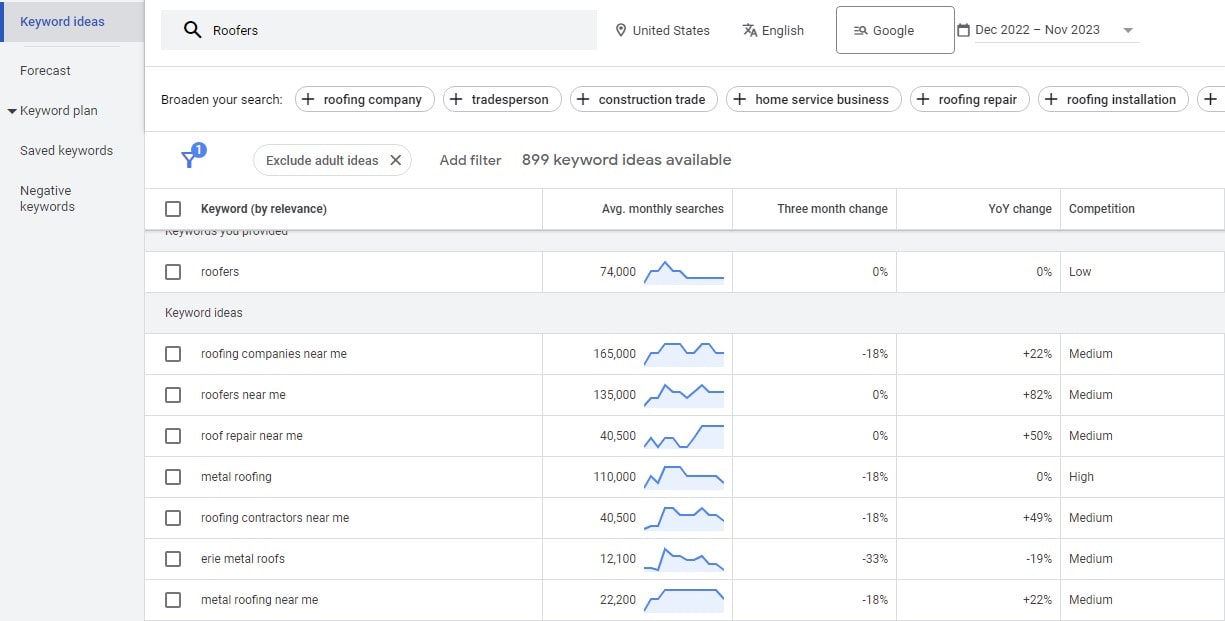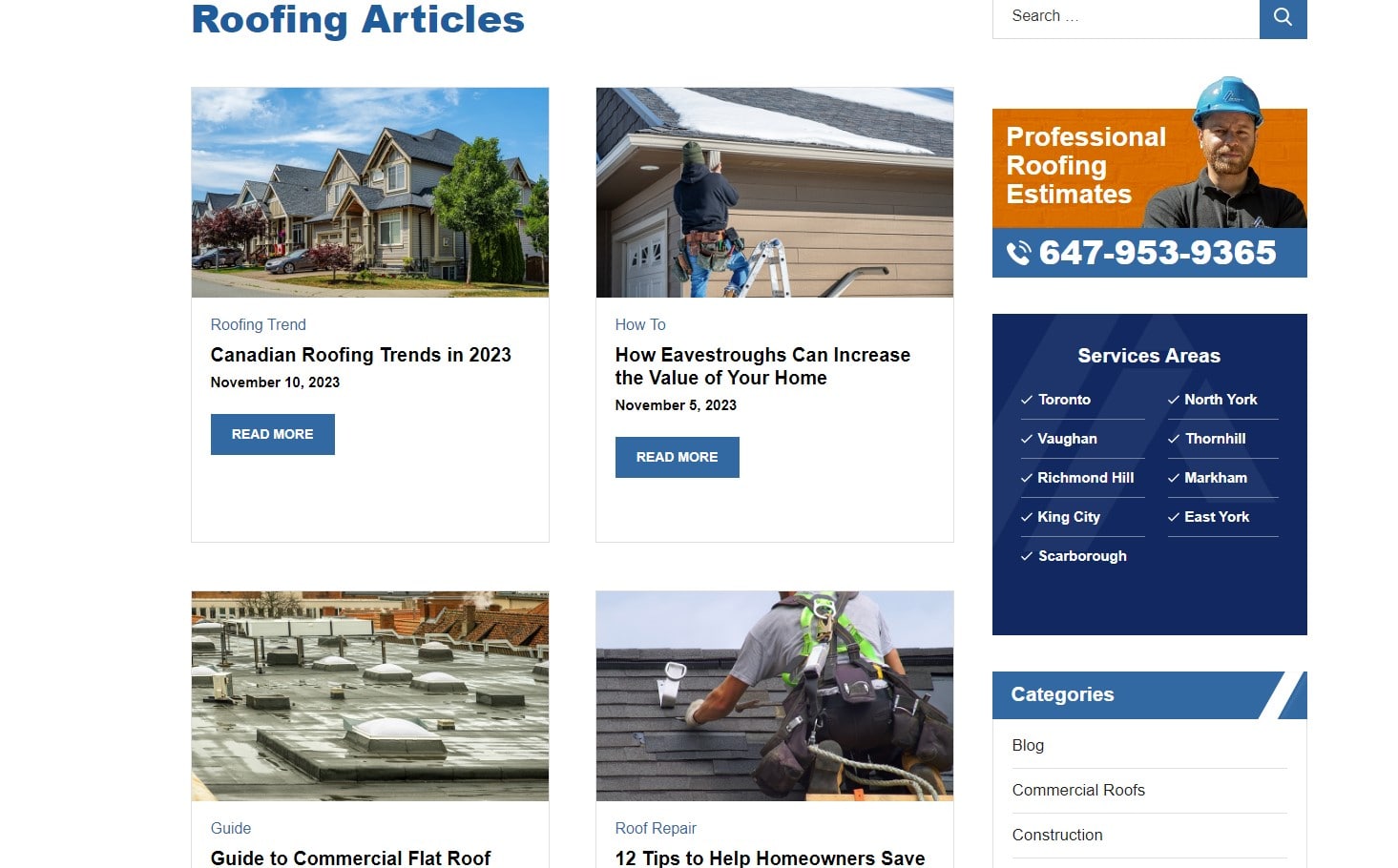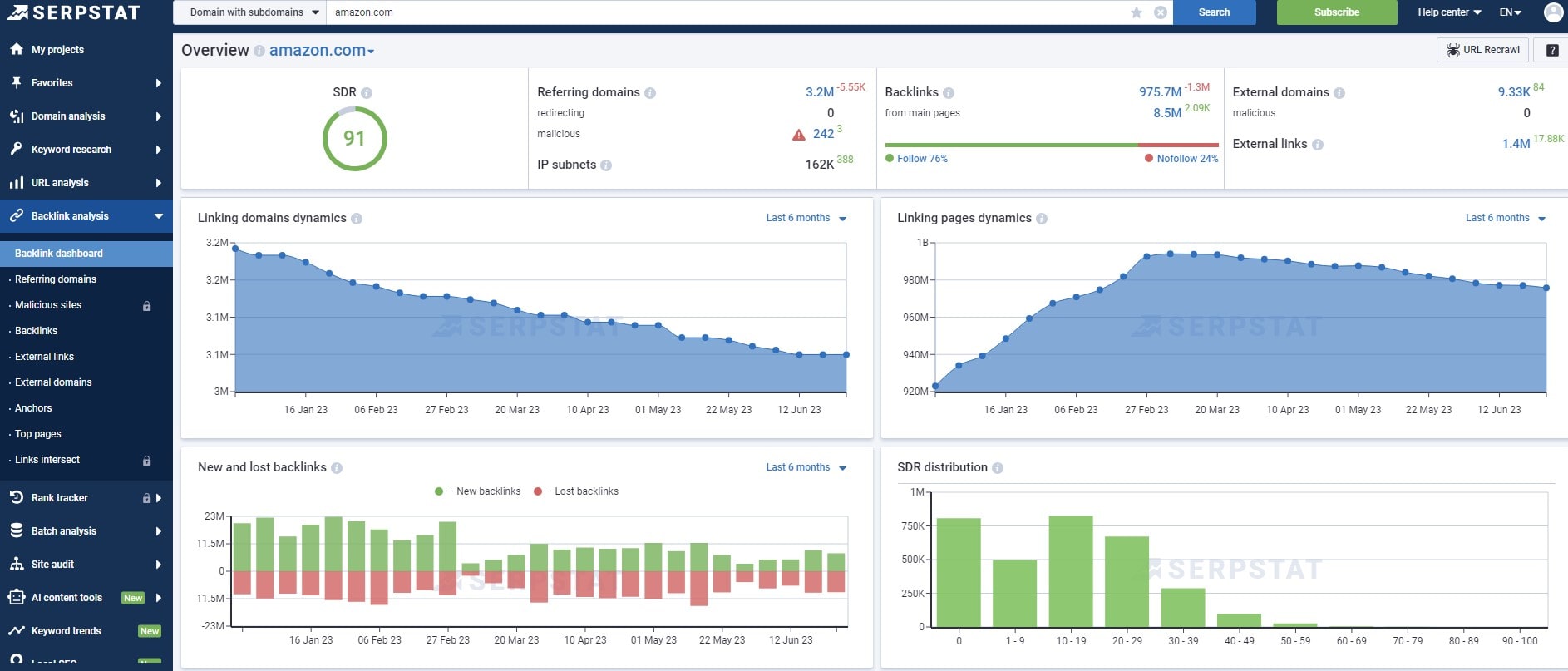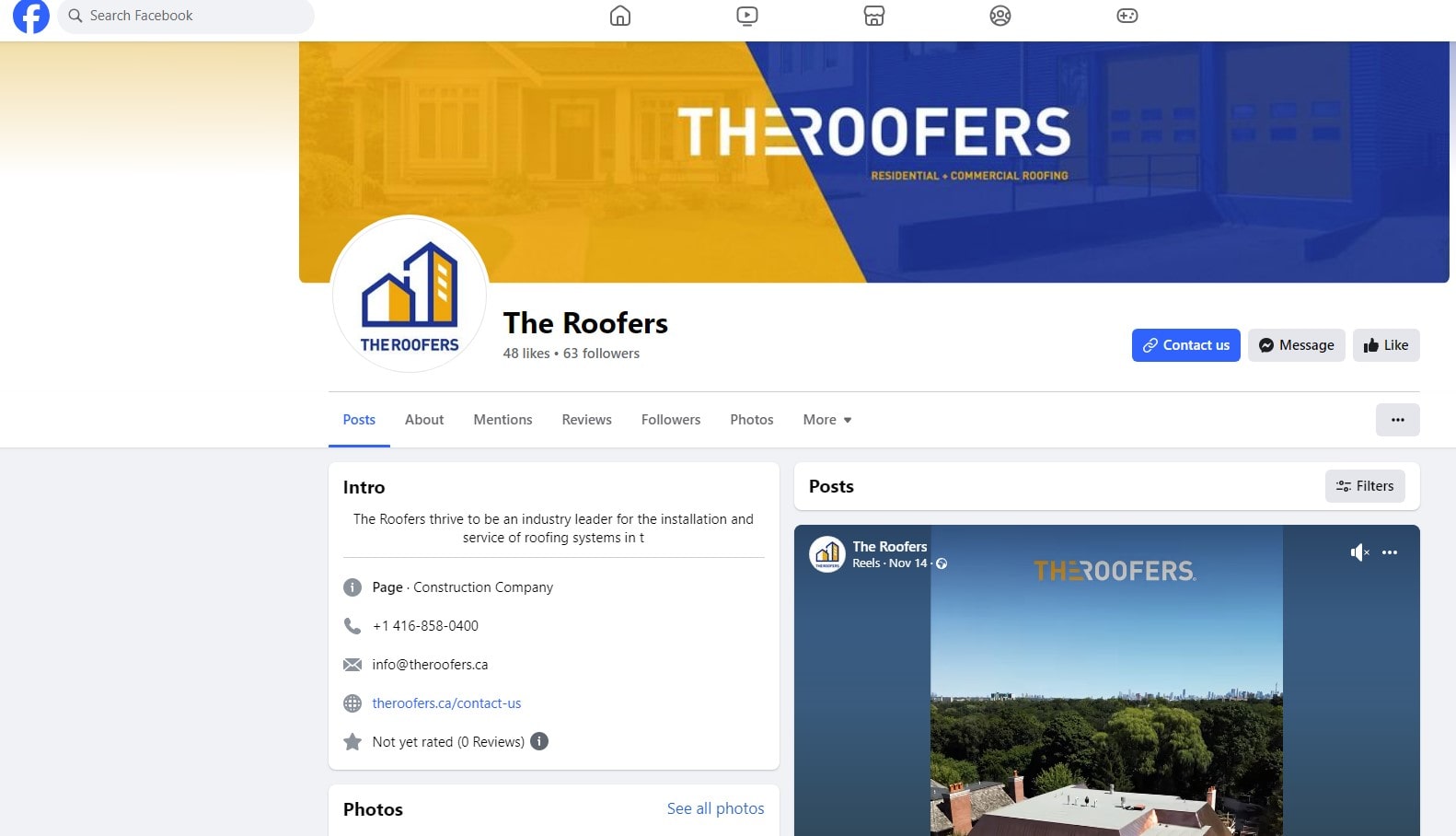In the ever-evolving landscape of digital visibility, SEO for roofers emerges as a pivotal tool for online dominance in 2024. This comprehensive guide intricately weaves through the complexities of search engine optimization, tailor-made for the roofing industry. Roofers confront unique digital obstacles, therefore we develop custom techniques to boost your website’s search engine rankings. This guide is your path to online success, from keyword specificity to local SEO. Incorporating tools like Plerdy, which provides insightful analytics and user behavior tracking, can further enhance your website’s performance. Join a digital transformation journey where each chapter reveals crucial ideas to boost your roofing business online.
Understanding SEO Basics
Roofing companies must understand SEO basics to increase their online presence and organic traffic. SEO improves your website and content for search engine results, helping customers find you. First, find the terms your target audience uses to find roofing services. Your website’s names, headers, and body text should carefully incorporate these keywords without overstuffing.

SEO also involves optimizing your website’s structure and design. A well-organized site with a clear hierarchy, fast loading times, and mobile-friendly design significantly enhances user experience, which is a critical factor in Google’s ranking algorithms. Moreover, SEO isn’t just about your website; it extends to how your business is represented across the internet. This includes having consistent business information across various online directories and a strong presence on social media platforms.
Another crucial aspect of SEO basics is understanding the difference between on-page and off-page SEO. On-page SEO refers to the optimizations you can directly control on your website, while off-page SEO involves external factors like building backlinks from other reputable websites in the roofing industry or local business directories. Both are important for establishing your site’s authority and relevance to Google search engines.
For roofing companies, understanding and implementing these fundamental SEO strategies can lead to improved search engine rankings, greater online visibility, and ultimately, more business opportunities.
Keyword Research for Roofers

Successful SEO strategies, especially for roofing firms, start with keyword research. This process involves identifying potential customers’ terms and phrases when searching for roofing services online. Understanding and implementing effective keyword research can significantly enhance a roofing company’s online visibility and Google search engine ranking.
Tools for Keyword Research
- Google Keyword Planner: Ideal for finding keywords related to roofing services. Provides data on search volume and competition.
- SEMrush: Offers detailed insights into keyword trends and competition analysis and helps identify potential keywords your competitors use.
- Ahrefs: Great for exploring keyword ideas, tracking your ranking progress, and analyzing the keyword profile of competitors.
Finding Relevant Keywords
- Start with Broad Terms: Begin with general terms like “roof repair,” “roofing services,” or “roof installation.”
- Focus on Specific Services: If you specialize in specific services like “slate roof installation” or “commercial roofing,” include these in your research.
- Consider User Intent: Are your potential clients looking for services, information, or DIY tips? For instance, “roof leak repair services” versus “how to fix a roof leak.”
- Long-Tail Keywords: Incorporate long-tail keywords for less competition and more targeted traffic. Examples include “affordable roofing services in [City Name]” or “emergency roof leak repair near me.”
Understanding Local SEO Keywords
- Geographical Modifiers: Include city, region, or neighborhood names in your keywords. For instance, “roofing contractors in Austin TX” or “Miami roof installation services.”
- Local Service Demand: Understand local roofing needs. For example, in areas with frequent storms, keywords like “storm damage roof repair in [City Name]” can be relevant.
Analyzing the Competition
- Identify Competitor Keywords: Use tools like SEMrush to see which keywords your competitors rank for.
- Analyze Their Content: Look at the type of content that is ranking well for your competitors. Note how they integrate keywords into their content.
- Gap Analysis: Find keyword gaps – terms your competitors are not ranking for but are relevant to your audience.
SEO Tips with Roofing Industry Examples
- Specialized Services: If you offer unique services like “green roofing,” make sure to create content and keywords around it.
- Seasonal Keywords: Include seasonal keywords like “winter roof maintenance” if applicable to your area.
- Customer FAQs: Use common customer questions as a source for keyword ideas, such as “how long does roof installation take.”
Effective keyword research for roofers involves a mix of broad and specific terms, understanding the local market, and keeping an eye on the competition. By meticulously choosing and incorporating these keywords into the content of your website, you can greatly enhance your likelihood of attaining a higher position in search engine rankings and efficiently reaching your intended audience.
On-Page SEO Strategies

On-page SEO is crucial to enhancing your roofing website’s visibility and search engine ranking. This method optimizes web pages for greater rankings and appropriate visitors. Let’s dive into the key on-page SEO techniques that roofing companies should implement to optimize their websites effectively.
Quality Content is King
- Informative and Engaging Content: Your website should offer valuable information about roofing services. The content must be engaging, easy to read, and valuable to the reader. Include topics like types of roofing materials, maintenance tips, or the roof installation process.
- Use of Keywords: Integrate researched keywords naturally into your content. Avoid keyword stuffing; instead, aim for a natural flow that maintains the quality of the information.
- Regular Updates: The roofing industry changes. Keep your information current with roofing trends, materials, and technology.
Meta Tags Optimization
- Title Tags: These are critical as they define the title of your web page. Include primary keywords and keep it under 60 characters for optimal display in search results.
- Meta Descriptions: Though not ranking factors, they affect click-through rates. A compelling meta description should accurately summarize the page content and include a call-to-action, within 160 characters.
Effective Use of Headers
- Hierarchy and Structure: Utilize header tags (H1, H2, H3…) to structure your content. Use your main term in your H1 once as the title. H2s and H3s can be used for subheadings to break down content into digestible sections.
- Keywords in Headers: Incorporate secondary and long-tail keywords in your subheadings for better indexing and understanding of your content’s context by search engines.
Image Optimization
- Relevant Images: Use high-quality images related to roofing. Before-and-after shots of roofing projects, images of different roofing materials, and team photos can enhance user engagement.
- Alt Text: Always include descriptive alt text for images. This not only aids in SEO but also makes your website more accessible.
- File Size and Format: Optimize images for web use. Large graphics slow down your site, hurting SEO and user experience.
Mobile Optimization and Site Speed
- Responsive Design: Ensure your website is mobile-friendly. Many searches come from mobile devices, and Google favors mobile-optimized sites.
- Fast Loading Times: Site speed is a crucial ranking factor. Use tools like Google PageSpeed Insights to identify and fix elements that slow down your site, like large image files, unoptimized code, and slow server response times.
Additional On-Page SEO Tips:
- Internal Linking: Use internal links to guide visitors to related content on your site, which helps in keeping them engaged and reduces bounce rates.
- URL Structure: Keep URLs short, readable, and include a keyword if possible.
- Social Sharing Buttons: Incorporate social sharing options to enhance user engagement and potential content distribution.
By implementing these on-page SEO strategies, roofing companies can significantly improve their website’s search engine ranking, making it easier for potential customers to find their services online. Optimized websites improve user experience and search engine rankings, increasing engagement and conversion rates.
Content Creation and Blogging
Content production and blogging allow roofers to communicate with potential customers, demonstrate expertise, and boost search engine rankings. Engaging content extends site visits and boosts conversions. How roofing companies may blog and develop compelling content.
Crafting Engaging Roofing Content
- Understand Your Audience: Know your target customers’ needs and pain points. Are they residential homeowners or commercial property managers? Tailor your content accordingly.
- Topic Ideas: Cover a wide range of topics relevant to roofing. Some ideas include:
- “Choosing the Right Roofing Material for Your Home”
- “How to Prepare Your Roof for Winter”
- “Cost-Benefit Analysis of Roof Repair vs. Replacement”
- “Latest Trends in Eco-Friendly Roofing”
- “Common Roofing Problems and How to Solve Them”
- Storytelling with Local Cases: Share stories of local roofing projects. This could include case studies, before-and-after transformations, or customer testimonials. Such content resonates more with your local audience and builds trust.
- Educational Content: Provide informational content that helps your audience understand roofing better. This could include detailed guides on roofing types, maintenance tips, and how-to articles.
Managing a Content Calendar
- Regular Updates: Blogging requires consistency. Use a content calendar to schedule weekly, biweekly, or monthly posts.
- Seasonal Topics: Plan content around seasons or events. For example, post about “Roof Inspection Tips After a Storm” after stormy weather or “Summer Roof Maintenance Tips” as summer approaches.
- Diverse Formats: Keep your audience engaged by mixing content kinds including blogs, infographics, and videos.
User Engagement Strategies
- Interactive Elements: Incorporate polls, quizzes, or FAQs in your posts to boost engagement.
- Comments Section: Encourage readers to leave comments and respond to them, fostering a community feel.
- Social Sharing: Use social share buttons to get readers to share your content.
- Backlinking Opportunities: In your blog posts, link to other relevant pages of your website to keep the reader engaged and reduce bounce and improve internal linking structure, which is beneficial for SEO. Additionally, consider guest posting on reputable industry-related websites to gain quality backlinks to your site.
- Regular Content Updates: Keep your content current. Search engines prefer current, relevant content, so revisiting and editing old blog entries can increase SEO.
Utilizing Local Roofing Cases or Stories
- Showcase Real Projects: Share real-life case studies of roofing projects completed in your service area. This not only demonstrates your expertise but also boosts local relevance.
- Customer Testimonials: Use customer reviews and testimonials. This adds credibility and improves local SEO if the testimonials are from local clients.
- Local Issues and Solutions: Address common roofing issues specific to your geographical area. For example, if you operate in an area prone to heavy snowfall, write about “Effective Snow Removal from Roofs.”
In conclusion, for roofing companies, blogging and content creation should go beyond mere promotion. It should educate, engage, and provide value to your audience while incorporating SEO best practices. By doing so, you not only enhance your website’s SEO performance but also establish your brand as a trusted authority in the roofing industry.
Off-Page SEO Techniques

Off-page SEO, a crucial element of a comprehensive SEO strategy, extends beyond the confines of your roofing company’s website. It involves various techniques to improve your website’s position in search engine results. Central to this are backlinks, local directories, and guest posting, each playing a pivotal role in enhancing your site’s authority and relevance.
Importance of Backlinks
Backlinks, or inbound links, are important for search engine rankings. These links connect your website to others, boosting its visibility and reputation. Search engines like Google value backlinks since they build your website’s legitimacy. They indicate that other websites value your material. High-quality backlinks from industry-leading websites are essential for your roofing company’s search engine performance. Implementing this strategy will boost your SEO efforts.
- Quality over Quantity: Aim for links from authoritative, relevant sites. A few high-quality backlinks are more beneficial than numerous low-quality ones.
- Diverse Link Profile: Seek backlinks from different types of websites, including industry blogs, local business directories, and roofing material suppliers’ sites.
Utilizing Local Directories
Local directories play a vital role in off-page SEO for roofers. They help in local search engine optimization, making it easier for potential customers in your service area to find you.
- Consistent NAP Information: Maintain constant NAP across all directories. Local SEO requires consistency.
- Relevance and Authority: List your business in directories that are relevant to the roofing industry and have high domain authority.
Guest Posting
Guest posting on reputable sites, especially those related to home improvement and construction, can be a powerful off-page SEO strategy. It not only helps in link building but also in establishing your brand as an industry expert.
- Quality Content: Provide valuable, unique insights in your guest posts. This increases the likelihood of them being accepted and shared.
- Relevant Platforms: Target platforms that your potential customers are likely to visit. This could include home improvement blogs, construction forums, and local community websites.
SEO Tips
- Build Relationships with Local Construction Businesses: Collaborate with local businesses for cross-promotion and backlink opportunities.
- Participate in Local Events: Engage in community events and sponsorships. This can lead to mentions and links from local media and organizations.
- Leverage Social Media: Promote your content and receive backlinks on social media.
Finally, off-page SEO is essential to your roofing company’s internet visibility. Build a solid backlink profile, maintain a strong presence in local directories, and contribute unique material through guest posting to increase your search engine rankings and position your roofing firm as a trusted authority.
Managing Online Reviews and Reputation
Managing online reviews and reputation is pivotal for roofing companies in today’s digital world. Reviews not only influence customer decisions but also impact SEO. A proactive and protective approach to handling online reviews can significantly enhance your business’s credibility and trustworthiness.
Firstly, actively encourage your customers to leave reviews. This can be done post-service via email follow-ups or through verbal reminders at the end of a job. Positive reviews enhance SEO and online exposure, but you must earn them organically.
Recognizing and responding to both favorable and unfavorable assessments is crucial for proficiently overseeing and upholding an efficient work atmosphere. Expressing gratitude for positive reviews can foster a harmonious rapport, thereby cultivating a favorable professional association. It demonstrates to prospective clients that you prioritize and actively interact with your customer base.
Handling negative reviews requires a careful approach. Respond promptly and professionally, acknowledging the customer’s concerns. Offer to resolve any issues offline if necessary. This demonstrates to potential clients that you’re committed to customer satisfaction and willing to address and rectify any problems. Avoid getting defensive or engaging in arguments online, as this can harm your reputation.
Lastly, monitor your online reputation regularly. Social media monitoring and Google Alerts can help you track online business mentions. This will help you to respond appropriately and keep a pulse on your business’s online perception.
In summary, effectively managing online reviews and your reputation is crucial to maintaining a positive and authoritative online presence. It’s about fostering good customer relationships, responding thoughtfully to feedback, and continually monitoring your online image.
Utilizing Social Media and Local Listings

Roofing companies may boost their online visibility and community engagement by using social media and local listings efficiently. In the digital era, these platforms offer valuable opportunities to showcase your services, engage with potential customers, and improve local SEO.
Effective Use of Social Media
Social media platforms boost brand exposure and audience engagement. Here’s how to make the most of them:
- Showcase Your Work: Regularly post photos and videos of your completed roofing projects, demonstrating your expertise and quality of work.
- Engage with Your Audience: Respond to comments and messages promptly. Engaging with your audience builds trust and shows that you value customer interaction.
- Share Helpful Tips: Post content that provides value, like maintenance tips, seasonal roofing advice, or information about different roofing materials.
- Promote Special Offers: Special promos and discounts on social media boost engagement and revenue.
Importance of Google My Business (GMB)
GMB is a critical tool for local SEO and online visibility. With this tool, you will have the ability to effectively oversee and control the online presence of your roofing business on Google Maps and search engine results. Here’s why it’s important:
- Boosts Local Visibility: A properly optimized Google My Business (GMB) listing enhances the likelihood of your inclusion in Google’s Local Pack, thereby facilitating the discovery of your business by local customers.
- Showcases Business Information: GMB provides essential business details like location, hours, and contact info at a glance.
- Facilitates Customer Reviews: GMB is a primary platform for customers to leave reviews, significantly influencing potential clients’ perceptions and decisions.
In conclusion, effectively leveraging social media and local listings like Google My Business is crucial for roofing companies looking to establish a strong online presence. These platforms not only aid in connecting with the local community but also play a significant role in boosting your business’s local search visibility.
Conclusion
Roofing companies should use a diversified SEO strategy to grow their internet presence. This includes keyword optimization, content creation, social media engagement, and local business listings. From writing engaging content and generating strong backlinks to keeping a good online reputation, SEO quality is essential. Roofers can negotiate the competitive internet climate in 2024, increase their search engine ranks, and build a trustworthy brand by using these tactics. Adding Plerdy to their websites improves UX and website optimization, increasing conversion rates and business growth.
